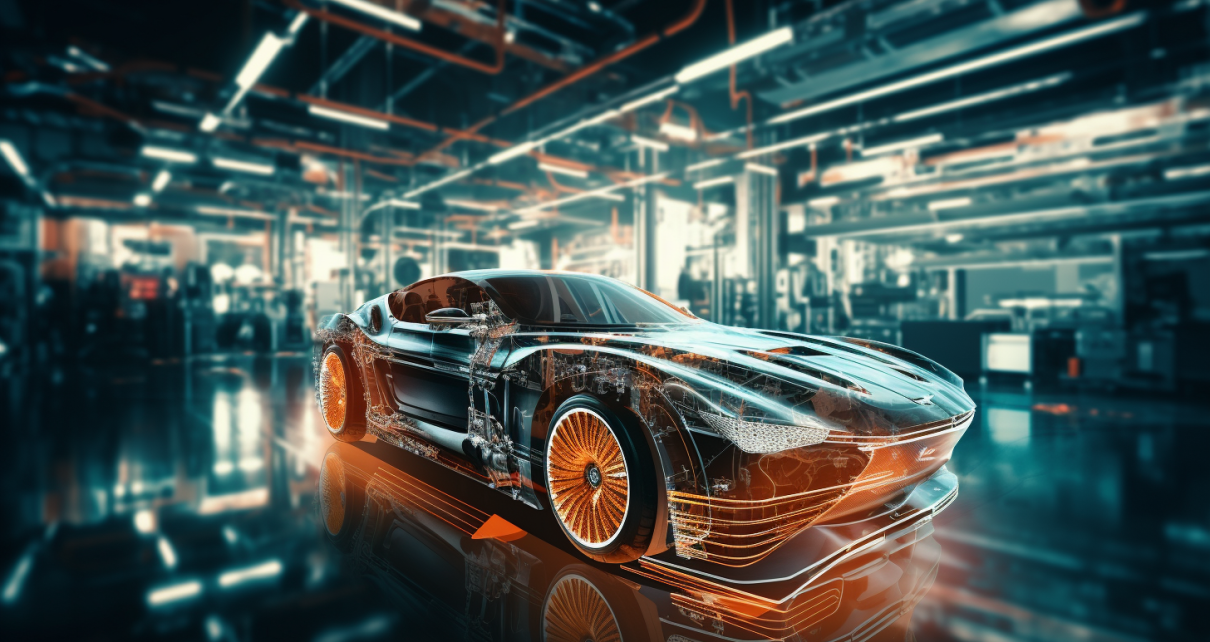The automotive industry is undergoing a significant transformation, driven by the innovative application of generative artificial intelligence (GenAI). This technology is reshaping various aspects of the sector, from vehicle design and manufacturing to maintenance and user experience. The global market for GenAI in the automotive industry, valued at USD 312.46 million, is projected to reach approximately USD 2,691.92 million by 2032, exhibiting a remarkable CAGR of 24.03% from 2023 to 2032.
The Role of Generative AI in Automotive Design and Manufacturing
Generative AI, a sub-field of AI that focuses on creating algorithms capable of generating new and unique outputs, is playing a crucial role in vehicle design and manufacturing1. It is being used to instantly transform 2D sketches into NURBS models, streamlining design and engineering work2. This technology is not replacing designers but enabling them to explore a wide range of options faster and more efficiently.
Companies like Toyota are harnessing GenAI to enhance their capabilities in vehicle design1. The technology is also being used to generate new design concepts, create virtual prototypes, and optimize the manufacturing process.
Generative AI in Autonomous Vehicle Development
Generative AI is also enabling new breakthroughs in autonomous vehicle (AV) development2. It is being used to create realistic simulations that allow AVs to adapt to various scenarios4. This technology eliminates the need for expensive and time-consuming field experiments by generating reliable sensor data for training.
Enhancing User Experience with Generative AI
Generative AI is not only improving the design and manufacturing processes but also enhancing the user experience. It can be used to personalize infotainment systems, create customized driving modes, and enhance the voice recognition capabilities of in-car virtual assistants3. This leads to a more personalized and enjoyable driving experience for consumers.
Optimizing Supply Chain with Generative AI
Generative AI can also be used to optimize the supply chain of automotive manufacturers3. By analyzing large datasets and generating new content, GenAI can help reduce costs and improve efficiency for automotive manufacturers.
Future Trends and Opportunities
The use of GenAI in the automotive industry is expected to continue growing, paving the way for more environmentally friendly engineering and promoting sustainable practices1. As the technology continues to develop, it is likely to have an even greater impact on the automotive industry in the years to come.
FAQ
What is Generative AI?
Generative AI is a sub-field of AI that focuses on creating algorithms capable of generating new and unique outputs.
How is Generative AI used in the automotive industry?
Generative AI is used in various aspects of the automotive industry, including vehicle design, manufacturing, maintenance, user experience, and supply chain optimization.
What are the benefits of using Generative AI in the automotive industry?
Generative AI can help improve design and manufacturing processes, enhance user experience, optimize supply chain, and reduce costs and improve efficiency for automotive manufacturers.
What is the projected growth of the GenAI market in the automotive industry?
The global market for GenAI in the automotive industry is projected to reach approximately USD 2,691.92 million by 2032, exhibiting a remarkable CAGR of 24.03% from 2023 to 2032.
Glossary
Generative AI: A sub-field of AI that focuses on creating algorithms capable of generating new and unique outputs.
Autonomous Vehicle (AV): A vehicle that is capable of sensing its environment and operating without human involvement.
NURBS Models: Non-Uniform Rational B-Splines, a mathematical representation of 3D geometry, which can accurately describe any shape from a simple 2D line, circle, arc, or curve to the most complex 3D organic free-form surface or solid.
CAGR: Compound Annual Growth Rate, a useful measure of growth over multiple time periods.



